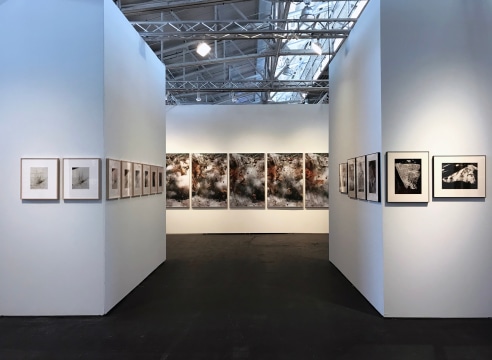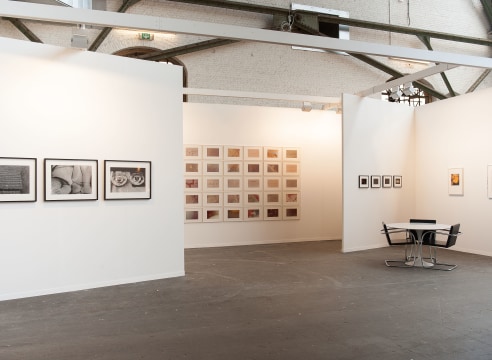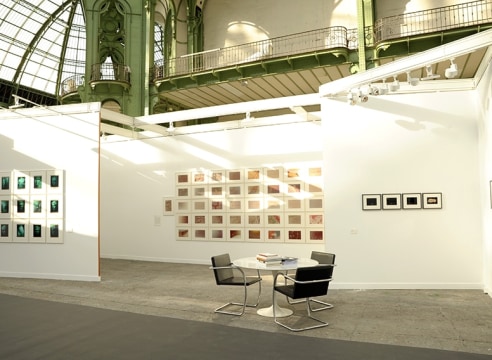
Wolfgang Tillmans est un artiste dont les photographies ont profondément marqué et influé ses contemporains. Sans faire de distinction entre art supérieur et art inférieur (beaux arts et arts appliqués, ici dans la photographie de mode), il s’intéresse avant tout à la relation entre les différentes sphères de la vie des gens, à la diversité intérieure des individus. « Ce qui me donne le plus d’entrain dans mon travail, l’incroyable aptitude des êtres humains à assembler ensemble des éléments totalement contradictoires de leur existence.»
À propos des premières photographies qui l’ont fait connaître, le monde de la jeunesse urbaine et la culture festive d’un certain groupe social des années 90 n’est pas vu comme un sujet documentaire en soi. En réalité, si Tillmans photographie alors avant tout ce qu’il connaît et les gens qui l’entourent, pour exprimer l’intense intimité de ceux-ci, son regard sur la culture jeune n’est jamais réducteur ou sensationnaliste. Dans ce regard, Tillmans s’efforce d’être le plus juste possible, pour dépasser les clichés –notamment sur ceux de sa génération- et montrer la profonde dignité et la complexité de la vie de ceux qu’il photographie. « En photographie, j’aime endosser exactement la position non privilégiée… que tout le monde peut adopter. » Ce regard « non privilégié » met en lumière le fait que la chose la moins intéressante a une présence physique aussi tangible qu’un diamant ou qu’une personne. Ainsi un manteau ou un vieux jean sont représentés avec la même acuité visuelle, la même attention, que les amis dont il fait le portrait. Là réside son apport à la photographie de mode.
Dans ses portraits, il faut souligner l’art que déploie de photographe pour trouver le juste milieu de la représentation, où les modèles ne laissent pas la présence de l’appareil altérer leur comportement, mais sans prétendre pour autant que l’appareil photographique est absent. Cette relation à l’objectif, cette relation à l’image de soi, est centrale dans l’art de Tillmans ; « Il existe dans notre esprit une encyclopédie de la représentation, qui se développe presque depuis le jour de notre naissance. Je pense que mon travail traite essentiellement de cela – respecter la connaissance que chaque personne a à propos de sa propre expérience visuelle et ce que cela représente pour elle. Nous portons tous avec nous cette connaissance considérable, donc ce que j’essaye réellement de faire dans mon travail est de photographier les gens entre ces deux pôles d’eux-mêmes : leur être en quelque sorte innocent, et leur inéluctable connaissance, l’inexorable vision d’eux-mêmes et de la société. Ce que les gens ressentent comme inapproprié de montrer d’eux-mêmes et quelle posture adopter. Comment nous trouvons le confort et l’inconfort dans cette posture. J’aime les gens précisément parce que nous sommes tous face au dilemme de savoir comment définir notre propre image. En proposant des alternatives à ces représentations de soi déjà présentes dans la culture dominante, j’espère contribuer à un climat de possibilité. »
Le portrait est à la source du travail de Tillmans, et ce même face à des vêtements sans vie. « Faire un portrait est un acte fondamentalement artistique – et son processus est un échange humain très direct, c’est ce que je trouve intéressant dans cette pratique. » Se mêlent alors dans ce processus diverses dynamiques qui le rendent passionnant : vulnérabilité, exposition de soi, gêne, honnêteté. Cette sincérité du modèle, de son regard face à la caméra, sans mise en scène de soi, mais sans mise en scène non plus d’un regard faussement documentaire, est centrale. Elle est rendue possible par l’absence d’opposition entre le photographe et le sujet, que l’objectif ne sépare pas, mais connecte, le photographe faisant toujours partie du sujet, étant également investi et vulnérable que son modèle. Par cet investissement dans le sujet, le photographe exprime sa fascination pour les individus et les interactions sociales.
Un autre aspect très important chez Tillmans est le fait que son œuvre soit en perpétuelle évolution, dans une constante exploration des rôles et potentiels du matériau, via le travail de tirage, ainsi que les choix de combinaisons et d’organisations entre les photographies lors d’installations et d’expositions.
Wolfgang Tillmans est né en 1968 à Ramscheid, en Allemagne. Il étudie à l’école d’art et de design Bournemouth & Poole, et travaille rapidement comme photographe de mode, pour des magazines comme I-D ou Prinz. Récemment son travail a été exposé au Musée d’Art Moderne (Paris, 1994), Kunsthalle (Zurich, 1995-2012), Museo Nacional Reina Sofia (Madrid, 1998), Städtlische Galerie (Remscheid, 1999), Palais de Tokyo (Paris, 2002), Tate Britain (London, 2003-2008), Museum of Contemporary Art (Chicago, 2006), Museu de Arte Modernas (Sao Paulo, 2012), Philadelphia Museum of Art (Philadelphia, 2014), National Museum of Modern Art (Osaka, 2015), Metropolitan Museum (New York, 2015).
Ses oeuvres sont notamment conservées au Metropolitan Museum (New York), Solomon R. Guggenheim Museum (New York), Museum of Modern Art (New York), Centre Georges Pompidou (Paris), Tate Britain (London), Staatsgalerie (Stuttgart), Städtische Galerie im Lenbachhaus und Kunstbau (München), Fondation Beyeler (Riehen, Switzerland), Hammer Museum (Los Angeles), Museum of Contemporary Art (Chicago), Walker Art Centre (Minneapolis), Stedelijk Museum (Amsterdam), Museo Nacional Centro de Arte Reina Sofia (Madrid).
Wolfgang Tillmans is an artist whose photographs deeply influenced his contemporaries. Without making any distinction between high and low art (fine arts and applied arts, here in fashion photography) he is interested above all in the relationship between the different parts of people’s lives, in the inner diversity of each individual. ‘What gives me the biggest kick out of my work, the incredible ability of the human being to piece together totally contradictory elements of their existence.’
About the first photographs that made him famous, the urban youth and dance culture of a specific social group of the 90’s is not seen as a documentary subject in itself. Actually, Tillmans photographs above all what he knows and the people around him, to express the intense intimacy they share, but his gaze is never over simplified or sensationalist. In his vision, Tillmans endeavours to be the fairest possible, to surpass the stereotypes – particularly those about his generation – and show the profound dignity and complexity of the life of those he photographs. ‘In photography, I like to assume exactly the unprivileged position…that everyone can take.’ This ‘unprivileged gaze’ highlights the fact that the most uninteresting thing is as physically present and tangible as a diamond or a person. Thus a coat or an old blue jeans are represented with the same visual acuteness, the same attention, as friends whose portraits he makes. Here lies his contribution to fashion photography.
In his portraits, one must underline the care he deploys to find the right balance of representation, where models don’t let the camera’s presence alter their behaviour, but don’t pretend either that the camera isn’t here. This relationship towards the lens, this relationship towards self-image, is central in Tillmans’ art ; ‘There is an encyclopaedia of representation that is in our heads almost from the day we were born. I think my work is especially dealing with that – respecting the knowledge that every single person has about his / her visual experience and what that means to him / her. Everyone of us carries this huge knowledge around so what I really try to do in my work is photograph people in between these two poles : their pure whatever innocent self and their inescapable knowledge and vision of themselves and of society. How people feel that it is appropriate to show and hold their body. How we find comfort and discomfort in posture. I love people precisely because we all have the dilemma of how we define our self image. By proposing alternatives to those self images already in mainstream circulation, I hope to contribute to a climate of possibility.’
Portrait is at the source of Tillmans’ work, even when confronted with lifeless clothes. ‘Making a portrait is a fundamental artistic act – and the process of it is a very direct human exchange, which is what I find interesting about it.’ In this process are thus mingling diverse dynamics, making it so inspiring : vulnerability, exposure, embarrassment, honesty. This sincerity of the model, of his look to the camera, deprived of any stage-setting of oneself, and deprived of any false documentary gaze, is crucial. It is made possible by the lack of opposition between photographer and subject, not set apart but connected by the camera, the photographer being always part of the subject, as invested and vulnerable as his model. Through this commitment in the subject, the photographer expresses his fascination for individuals and social interactions.
Another important aspect in Tillmans’ work is the fact that his oeuvre is perpetually evolving, in a constant exploration of the roles and potentials of the materials, through printing, and through the choice of combinations and organizations of photographs at the occasion of installations and exhibitions.
Wolfgang Tillmans was born in 1968 in Ramscheid, Germany. After studies of art and design in Bournemouth & Poole College, he worked as a fashion photographer for magazines such as I-D or Prinz. His work was recently exhibited in the Musée d’Art Moderne (Paris, 1994), Kunsthalle (Zurich, 1995-2012), Museo Nacional Reina Sofia (Madrid, 1998), Städtlische Galerie (Remscheid, 1999), Palais de Tokyo (Paris, 2002), Tate Britain (London, 2003-2008), Museum of Contemporary Art (Chicago, 2006), Museu de Arte Modernas (Sao Paulo, 2012), Philadelphia Museum of Art (Philadelphia, 2014), National Museum of Modern Art (Osaka, 2015), Metropolitan Museum (New York, 2015).
His artworks can be find in such collections as Metropolitan Museum (New York), Solomon R. Guggenheim Museum (New York), Museum of Modern Art (New York), Centre Georges Pompidou (Paris), Tate Britain (London), Staatsgalerie (Stuttgart), Städtische Galerie im Lenbachhaus und Kunstbau (München), Fondation Beyeler (Riehen, Switzerland), Hammer Museum (Los Angeles), Museum of Contemporary Art (Chicago), Walker Art Centre (Minneapolis), Stedelijk Museum (Amsterdam), Museo Nacional Centro de Arte Reina Sofia (Madrid).



